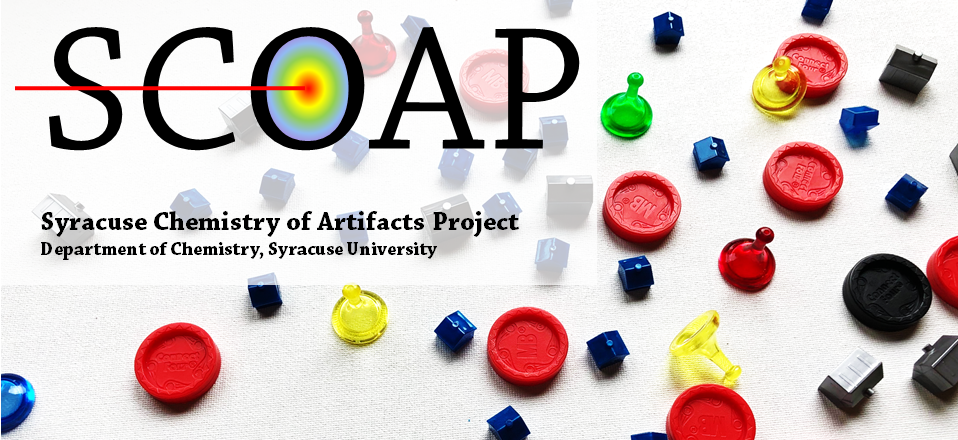Introduction
The Syracuse Chemistry of Artifacts Project (SCOAP) brings about a convergence of science and the humanities. This project is conducted by a team of scientists from the Department of Chemistry who use nondestructive spectroscopic techniques to investigate the chemical composition of cultural artifacts and related reference samples.
We focus on two areas of research: plastics and pigments. The diverse properties of plastics make these materials popular components of manufactured goods. Thus, plastic artifacts have become part of our cultural heritage and are now being curated by the Syracuse University Libraries’ Special Collection Research Center (SCRC). We collaborate with SCRC to analyze artifacts from the Plastics Collection to aid in curating and conserving this collection.
We also study historical pigments used by artists. Techniques for the identification of pigments and their mixtures are being developed using low frequency spectroscopic techniques in combination with quantum mechanical simulations. Results from this study will aid in conserving works of art as well as understanding their provenance.
Goals
- Create an extensive library of modern and historical reference samples and their chemical fingerprints
- Verify and correct existing descriptions of the chemical composition in plastic artifacts
- Provide chemical analysis of plastic artifacts of unknown composition
- Characterize pigments and their mixtures using low frequency vibrational spectroscopy
- Explain spectral features using computational chemistry
Learn More About Our Plastics Project Learn More About Our Pigments Project

